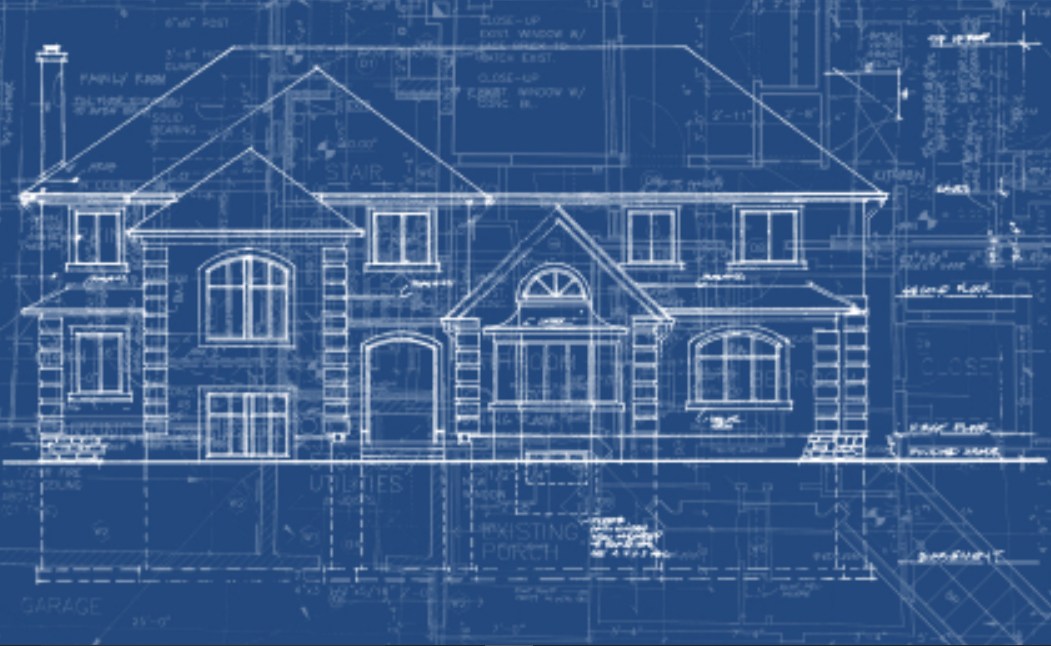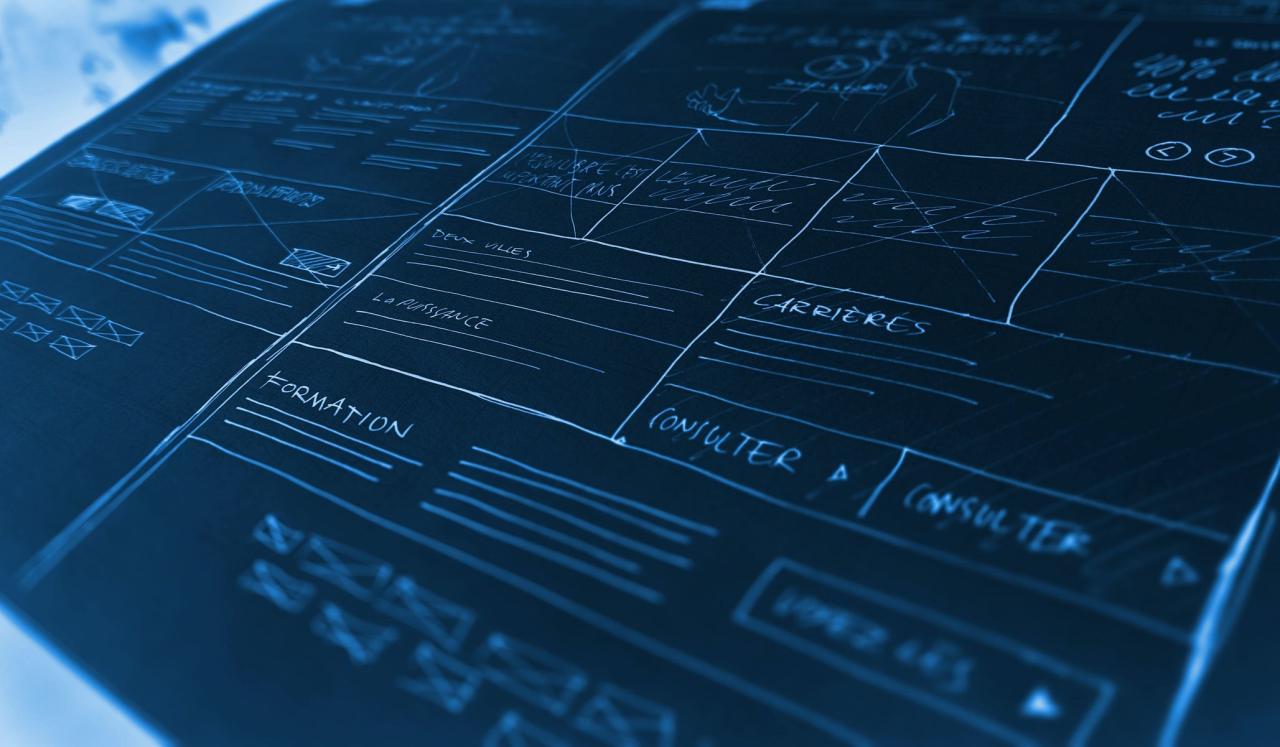The evolution of technology has propelled businesses into an era where agility, scalability, and cost-efficiency are no longer optional but essential for survival. At the forefront of this transformation is the strategic shift towards cloud computing, which, in turn, has elevated the discipline of cloud solution design. This crucial practice involves crafting comprehensive, optimized blueprints for applications and infrastructure within cloud environments. Far from a mere technical exercise, effective cloud solution design is about orchestrating a symphony of cloud services, security protocols, and operational workflows to meet specific business objectives. It’s the art and science of architecting systems that are not just functional but also resilient, performant, secure, and cost-effective, truly acting as the future’s blueprint for digital success.
From On-Premise to Cloud
To fully grasp the significance and intricacies of cloud solution design, it’s vital to appreciate the journey organizations have taken from traditional IT environments to the expansive possibilities offered by the cloud.
A. The Legacy of On-Premise Infrastructures
For decades, organizations largely relied on on-premise infrastructures, managing their own physical servers, networking equipment, and data centers. This model, while offering complete control, came with a substantial set of challenges that often stifled innovation and agility.
- High Capital Expenditure (CapEx): Setting up and maintaining an on-premise data center demanded significant upfront investment in hardware, cooling systems, power infrastructure, and physical security. This massive capital outlay often acted as a barrier to entry for new businesses and a drain on resources for established ones.
- Operational Overhead: Beyond the initial setup, organizations faced ongoing operational burdens. This included routine maintenance, hardware refreshes, power consumption, cooling management, and a dedicated IT staff for monitoring, troubleshooting, and patching. These tasks diverted valuable resources from core business activities.
- Limited Scalability and Elasticity: Scaling an on-premise infrastructure was a slow and costly affair. Adding new servers meant purchasing, racking, stacking, and configuring hardware, a process that could take weeks or months. This lack of elasticity made it difficult to respond quickly to fluctuating demands, leading to either over-provisioning (wasted resources) or under-provisioning (performance issues).
- Disaster Recovery Complexity: Implementing robust disaster recovery (DR) solutions on-premise required replicating entire data centers, which was prohibitively expensive and complex. Achieving high availability and fault tolerance demanded redundant hardware and specialized expertise, making it a luxury rather than a standard.
- Geographical Constraints: On-premise setups typically tied resources to specific physical locations, hindering global reach and the ability to serve users with low latency across different regions.
B. The Cloud Computing Revolution
The advent of cloud computing marked a profound paradigm shift, offering a compelling alternative to traditional IT. Cloud providers (like AWS, Azure, Google Cloud) abstract away the underlying physical infrastructure, offering computing resources as a service over the internet. This model has evolved through several stages:
- Infrastructure as a Service (IaaS): This provides fundamental computing resources—virtual machines, networks, storage—over the internet. Users manage their operating systems and applications, while the cloud provider manages the underlying infrastructure. It offers more flexibility than on-premise but still requires significant management effort.
- Platform as a Service (PaaS): This provides a complete development and deployment environment, including runtime, operating system, database, and web server. Developers can deploy their applications directly without managing the underlying infrastructure. It offers higher abstraction but can lead to some vendor lock-in.
- Software as a Service (SaaS): This delivers fully functional applications over the internet, managed entirely by the vendor (e.g., Gmail, Salesforce). Users simply consume the service.
- Function as a Service (FaaS) / Serverless: The highest level of abstraction, where developers write small, single-purpose functions that execute in response to events. The cloud provider automatically manages all underlying infrastructure, scaling, and patching. Users pay only for actual execution time.
This evolution has paved the way for cloud solution design, which focuses on leveraging these diverse cloud services to build optimal digital solutions.
Core Principles of Effective Cloud Solution Design
Designing solutions for the cloud is fundamentally different from traditional on-premise architecture. It requires a shift in mindset and adherence to specific principles that capitalize on cloud capabilities.
A. Scalability and Elasticity First
Cloud environments excel at scaling. A well-designed cloud solution embraces this by being inherently scalable and elastic. This means the system can automatically expand or contract resources based on demand, avoiding both over-provisioning (wasted cost) and under-provisioning (performance bottlenecks). This often involves using auto-scaling groups, serverless functions, and managed services that handle scaling automatically.
B. Cost Optimization and Management
One of the primary drivers for cloud adoption is cost savings, but effective cost optimization is a continuous design consideration. Cloud solution architects must design for cost efficiency by:
- Right-Sizing Resources: Selecting appropriate instance types, storage tiers, and database capacities to match workload requirements without overpaying for unused capacity.
- Leveraging Managed Services: Utilizing cloud provider’s managed services (e.g., managed databases, message queues) that abstract away operational overhead, often at a lower total cost of ownership (TCO).
- Implementing Cost Controls: Setting up budgets, alerts, and cost allocation tags to monitor and control spending.
- Optimizing for Usage Patterns: Choosing pricing models (e.g., on-demand, reserved instances, spot instances) that align with predictable or unpredictable workload patterns
C. High Availability and Fault Tolerance
Cloud design must prioritize high availability (HA) and fault tolerance (FT). This means designing systems that can withstand failures of individual components, services, or even entire data centers (Availability Zones/Regions) without significant downtime. Strategies include:
- Redundancy Across Availability Zones: Deploying application components and data across multiple geographically isolated availability zones within a region.
- Cross-Region Disaster Recovery: Implementing strategies to failover to another cloud region in the event of a catastrophic regional outage.
- Load Balancing: Distributing incoming traffic across multiple instances to ensure no single point of failure and optimize performance.
- Automatic Failover: Configuring databases and other stateful services to automatically failover to a healthy replica upon detection of a failure.
D. Security as a Core Pillar
Security is paramount in cloud solution design and must be considered from the ground up, not as an afterthought. This involves implementing a multi-layered security approach:
- Identity and Access Management (IAM): Granularly controlling who can access what resources and what actions they can perform.
- Network Security: Implementing Virtual Private Clouds (VPCs), subnets, security groups, network ACLs, and firewall rules to isolate and protect network traffic.
- Data Protection: Encrypting data at rest and in transit, implementing robust backup and recovery strategies, and managing data residency requirements.
- Compliance: Designing solutions to meet industry-specific regulations (e.g., GDPR, HIPAA, PCI DSS) and internal security policies.
- Monitoring and Logging: Implementing comprehensive logging and monitoring of security events to detect and respond to threats quickly.
E. Operational Excellence and Observability
A well-designed cloud solution is easy to operate, monitor, and troubleshoot. Operational excellence principles include:
- Automation: Automating infrastructure provisioning (via IaC), deployments (CI/CD), and operational tasks to reduce manual effort and errors.
- Monitoring and Alerting: Implementing comprehensive metrics, logs, and traces to gain deep visibility into application and infrastructure health, with proactive alerts for anomalies.
- Runbooks and Playbooks: Documenting standard operating procedures for common tasks and incident response.
- Continuous Improvement: Regularly reviewing operational data to identify areas for optimization and enhancement.
F. Performance Efficiency
Designing for performance efficiency means ensuring the system can scale to meet demand while maintaining responsiveness. This involves:
- Choosing Appropriate Services: Selecting the right database, compute, and networking services for specific performance profiles (e.g., high-IOPS storage for databases, low-latency networks).
- Optimizing Code and Queries: Ensuring application code is efficient and database queries are optimized.
- Caching: Implementing caching layers (e.g., Redis, Memcached) to reduce database load and improve response times.
- Content Delivery Networks (CDNs): Distributing content closer to users to reduce latency for static assets.
Key Components and Patterns in Cloud Solution Design
Cloud solution design often involves leveraging a combination of services and architectural patterns to build robust and scalable systems.
A. Virtual Private Clouds (VPCs) and Networking
The foundation of most cloud deployments is the Virtual Private Cloud (VPC), a logically isolated section of the public cloud where you can launch resources. Designing network topology within a VPC involves:
- Subnets: Dividing the VPC into smaller, isolated networks (public for internet-facing resources, private for internal ones).
- Routing Tables: Controlling how traffic flows between subnets and to/from the internet.
- Network ACLs and Security Groups: Implementing stateless (NACLs) and stateful (Security Groups) firewall rules to control traffic at subnet and instance levels.
- VPN/Direct Connect: Securely connecting on-premise data centers to the cloud VPC.
B. Compute Services: VMs, Containers, and Serverless
Choosing the right compute model is central to cloud design:
- Virtual Machines (VMs / IaaS): Services like AWS EC2, Azure VMs, Google Compute Engine. Offer maximum control over OS and software, ideal for lift-and-shift migrations or highly customized environments.
- Containers (PaaS/CaaS): Technologies like Docker managed by orchestrators like Kubernetes (AWS EKS, Azure AKS, Google GKE). Provide consistency, portability, and efficient resource utilization, ideal for microservices.
- Serverless Functions (FaaS): Services like AWS Lambda, Azure Functions, Google Cloud Functions. Abstract away servers entirely, ideal for event-driven, short-lived tasks, and highly cost-effective for fluctuating workloads.
C. Storage Solutions: Diverse Needs, Diverse Options
Cloud offers a rich array of storage options, each suited for different use cases:
- Object Storage: Highly scalable, durable, and cost-effective for unstructured data (e.g., images, videos, backups, data lakes). Examples: AWS S3, Azure Blob Storage, Google Cloud Storage.
- Block Storage: High-performance, low-latency storage attached to virtual machines (similar to a local disk). Examples: AWS EBS, Azure Disks, Google Persistent Disk.
- File Storage: Shared file systems for multiple compute instances, often supporting standard protocols like NFS or SMB. Examples: AWS EFS, Azure Files, Google Cloud Filestore.
- Archival Storage: Extremely low-cost storage for long-term data retention with slower retrieval times. Examples: AWS Glacier, Azure Archive Storage, Google Cloud Archive.
D. Database Services: Managed and Specialized
Cloud providers offer a plethora of managed database services, reducing operational overhead:
- Relational Databases (SQL): Managed services for popular relational databases (e.g., PostgreSQL, MySQL, SQL Server, Oracle). Examples: AWS RDS, Azure SQL Database, Google Cloud SQL. Also cloud-native relational databases like AWS Aurora.
- NoSQL Databases: Highly scalable and flexible databases for unstructured or semi-structured data. Examples: AWS DynamoDB, Azure Cosmos DB, Google Cloud Firestore/Datastore.
- Data Warehouses: Optimized for analytical workloads and large datasets. Examples: AWS Redshift, Azure Synapse Analytics, Google BigQuery.
- Graph Databases: For highly connected data. Examples: AWS Neptune, Azure Cosmos DB (Gremlin API).
E. Message Queues and Streaming Services
For building loosely coupled, asynchronous, and event-driven architectures:
- Message Queues: For decoupling components and handling asynchronous tasks (e.g., order processing, notifications). Examples: AWS SQS, Azure Service Bus, Google Cloud Pub/Sub.
- Streaming Data Platforms: For processing large volumes of real-time data streams (e.g., IoT data, clickstreams, logs). Examples: AWS Kinesis, Azure Event Hubs, Google Cloud Dataflow.
F. Identity and Access Management (IAM)
A critical security component that governs who can do what within the cloud environment. It involves defining users, groups, roles, and policies to grant least privilege access to resources.
G. Content Delivery Networks (CDNs)
Services like AWS CloudFront, Azure CDN, Google Cloud CDN cache static and dynamic content at edge locations globally, reducing latency for end-users and offloading traffic from origin servers.
The Cloud Solution Design Process: A Structured Approach
Effective cloud solution design typically follows a structured process, ensuring all critical aspects are considered and aligned with business goals.
A. Requirements Gathering and Business Alignment
The initial phase involves deep dives into business requirements, functional needs, and non-functional requirements. This includes understanding performance expectations (latency, throughput), scalability needs (peak loads, growth projections), security mandates (compliance, data residency), budget constraints, and operational goals. Close collaboration with stakeholders, product owners, and development teams is crucial to ensure the design truly solves business problems.
B. Architectural Blueprinting and Service Selection
Based on the gathered requirements, the architect creates a high-level architectural blueprint. This involves:
- Decomposition: Breaking down the application into logical components or microservices.
- Service Mapping: Identifying which cloud services (compute, storage, database, networking, etc.) are best suited for each component, considering factors like cost, performance, scalability, and operational overhead.
- Integration Patterns: Defining how different services will communicate (e.g., APIs, message queues, event streams).
- Data Flow: Mapping the flow of data through the system, including ingress, processing, storage, and egress.
C. Security and Compliance Integration
Security must be an intrinsic part of the design. This phase focuses on integrating security controls at every layer:
- Identity and Access Management: Designing granular IAM policies for users, roles, and service accounts.
- Network Segmentation: Defining VPCs, subnets, and security boundaries.
- Data Encryption: Specifying encryption for data at rest and in transit.
- Compliance Frameworks: Ensuring the design aligns with relevant industry and regulatory compliance standards (e.g., HIPAA, GDPR, SOC 2, PCI DSS).
- Security Monitoring: Incorporating logging, auditing, and threat detection services from the outset.
D. Cost Estimation and Optimization Planning
Beyond initial cost estimates, this phase involves detailed planning for ongoing cost optimization. This includes:
- Workload Analysis: Understanding peak vs. average loads to inform scaling strategies.
- Pricing Model Selection: Choosing appropriate cloud pricing models (On-Demand, Reserved Instances, Savings Plans, Spot Instances).
- Cost Tagging Strategy: Implementing a consistent tagging strategy for resource allocation and cost attribution.
- Optimization Tools: Planning to leverage cloud cost management tools and FinOps practices for continuous monitoring and optimization.
E. Operational Design and Observability Planning
Designing for ease of operation is critical. This involves:
- Deployment Strategy: Defining CI/CD pipelines, Infrastructure as Code (IaC) templates, and automation for seamless deployments.
- Monitoring and Alerting: Specifying comprehensive logging, metrics, and tracing strategies, along with alert configurations for critical thresholds.
- Backup and Disaster Recovery: Designing robust backup policies, RTO/RPO objectives, and disaster recovery strategies (e.g., active-passive, active-active across regions).
- Incident Management: Planning for incident response, runbooks, and post-mortem processes.
F. Proof-of-Concept (POC) and Iteration
For complex or novel designs, executing a Proof-of-Concept (POC) is invaluable. This involves implementing a small part of the design to validate assumptions, test critical components, and gather early feedback. Cloud solution design is rarely a one-time event; it’s an iterative process that adapts to evolving requirements, new cloud features, and operational learnings. Continuous feedback loops are essential.
Key Trends Shaping Cloud Solution Design
The field of cloud computing is constantly evolving, and cloud solution design must adapt to emerging trends and technologies.
A. Serverless and Event-Driven Architectures
The move towards serverless and event-driven architectures is a major trend. Architects are increasingly designing systems composed of small, single-purpose functions triggered by events, leveraging services like AWS Lambda, Azure Functions, and Google Cloud Functions. This reduces operational overhead, optimizes costs for intermittent workloads, and simplifies scaling, making it a powerful pattern for highly responsive and scalable applications.
B. Kubernetes and Container Orchestration
Kubernetes has become the de facto standard for container orchestration. Cloud solution architects are designing solutions that leverage managed Kubernetes services (e.g., AWS EKS, Azure AKS, Google GKE) to deploy, manage, and scale containerized microservices. This provides portability across cloud environments and robust management capabilities for complex, distributed applications.
C. Data Mesh and Data Fabric Architectures
As data volumes explode, traditional centralized data warehouses are being complemented or replaced by more distributed approaches like Data Mesh and Data Fabric. Cloud solution architects are designing decentralized data architectures where data is treated as a product, owned by domain teams, and exposed through discoverable interfaces. This enables faster data access, better governance, and more agile data analytics across the enterprise.
D. Edge Computing Integration
The proliferation of IoT devices and the demand for low-latency processing are driving the integration of edge computing into cloud solutions. Architects are designing hybrid architectures where processing occurs closer to data sources (at the edge) and then aggregates or sends relevant data to the centralized cloud for further analysis, storage, or machine learning. This optimizes network bandwidth and reduces latency for real-time applications.
E. FinOps: Collaborative Cloud Cost Management
FinOps is a growing discipline that brings financial accountability to the variable spend model of cloud computing. Cloud solution design is increasingly intertwined with FinOps principles, where architects actively collaborate with finance and operations teams to make cost-aware design decisions. This includes selecting cost-optimized services, implementing granular cost allocation, and continuously monitoring and optimizing cloud expenditure throughout the application lifecycle.
F. AI/ML Integration and MLOps
Artificial Intelligence and Machine Learning are no longer standalone projects but are being integrated into core business applications. Cloud solution architects are designing architectures that support the entire MLOps (Machine Learning Operations) lifecycle, from data ingestion and model training to deployment, monitoring, and retraining of AI/ML models. This often involves leveraging specialized cloud ML services (e.g., AWS SageMaker, Azure Machine Learning, Google AI Platform).
G. Enhanced Security Paradigms: Zero Trust and SASE
Cloud security design is moving towards more proactive and granular models. Zero Trust architectures, which assume no inherent trust inside or outside the network and require strict verification for every access request, are becoming standard. Similarly, SASE (Secure Access Service Edge) converges network security functions with WAN capabilities into a single cloud-delivered service, simplifying security for distributed workforces and cloud environments. Cloud architects are fundamental to implementing these advanced security paradigms.
Conclusion
Cloud solution design is an indispensable discipline that underpins the success of modern digital initiatives. It’s about much more than simply lifting and shifting applications to the cloud; it’s about fundamentally rethinking how systems are built, deployed, and operated to harness the full power of cloud computing. By adhering to principles of scalability, cost optimization, high availability, robust security, and operational excellence, cloud solution architects craft the blueprints for applications that are not only performant and reliable but also agile and adaptable to future business needs.
The continuous evolution of cloud services and the emergence of new architectural patterns like serverless, containers, and edge computing mean that cloud solution design is a dynamic and exciting field. As organizations increasingly rely on the cloud for their core operations, the role of the cloud solution designer becomes ever more critical. They are the visionaries who translate business requirements into resilient, efficient, and secure cloud architectures, truly acting as the essential architects of tomorrow’s digital infrastructure.














